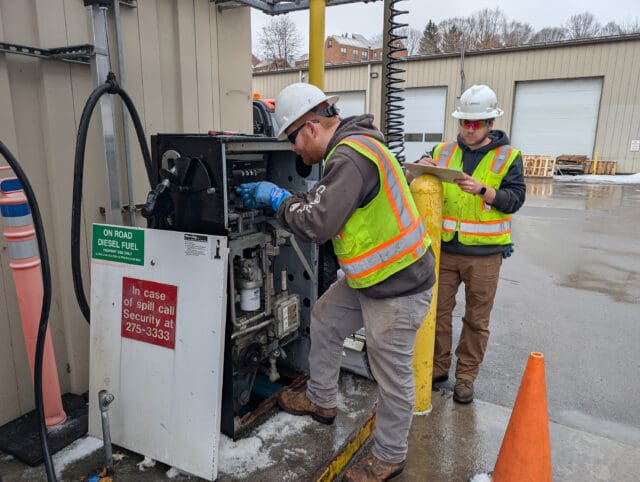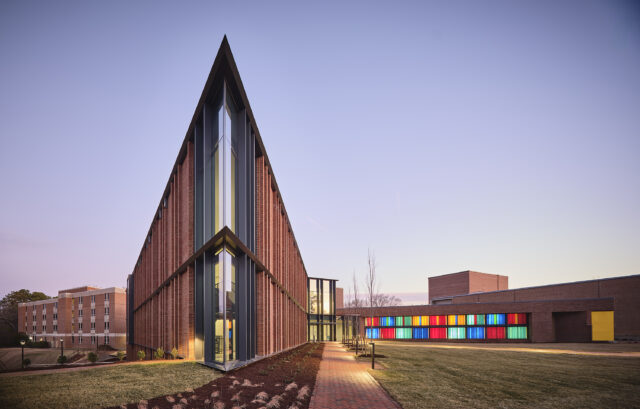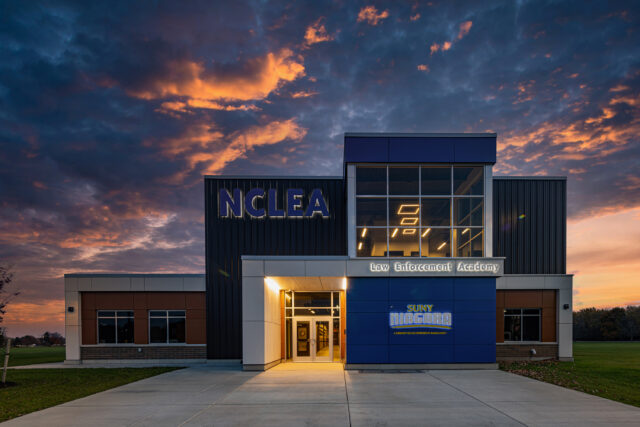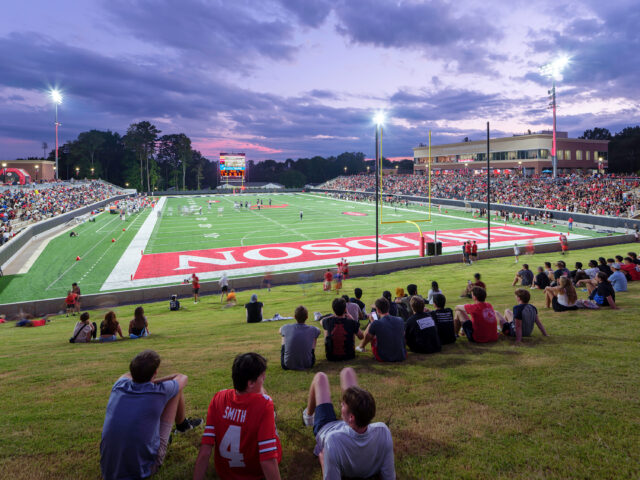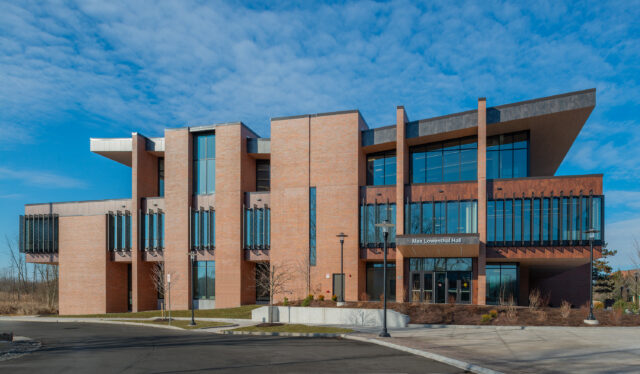Infrastructure Separation and Abatement
The project was broken into two phases. Infrastructure separation from adjoining/adjacent office building comprised the first phase, along with hazardous materials abatement and demolition. The second phase comprised shell and envelope improvements, and interior fit out.
The existing office building selected for the Downtown Campus actually comprised four connected buildings, part of the 1,634,400 sq. ft., ten building complex that was Kodak World Headquarters. LaBella was tasked with separating all utilities from the rest of the complex, with the exception of steam and chilled water, which would be metered.
Demolition and abatement design was also performed by LaBella, which was significant given the age of the buildings and the desire to reuse as much infrastructure as possible to save project budget for program. Infrastructure reuse was a hurdle for our LEED team, but ultimately solved.



Campus Spine
The program for the campus includes admissions, registration, financial aid, a learning commons, classroom and faculty office space, and an event space. The design was carefully developed to provide optimum learning environment flexibility, while contending with an existing column grid and floor-to-floor heights which were originally intended for an office environment. The massive volume of space also required careful consideration for wayfinding, with several departments vying to be easily accessible on the first floor.The design team’s solution was the create a central campus “spine”, which provides a central lobby and circulation amongst the first three floors of the building, creating a dynamic public space and cross-functional social hub.
Learning Commons
The 15,000 sq. ft. Academic Learning Center is comprised of the Learning Commons, which focuses on independent study, and Integrated Learning Center, which is focused on tutoring and student / faculty interaction. Physically located at the center of the campus, this space is the academic and student hub. The center combines library, computer lab and tutoring/collaboration space, indicative of the pedagogy-driven design approach throughout the campus throughout the campus.
Collaboratories
Collaboratories (designed for —you guessed it — collaboration) on every floor create a social space where creativity can thrive. The informal learning spaces provide a casual, comfortable, and versatile environment for working on assignments, brainstorming on the white boards, or just drinking coffee.
Green Roof
Three areas of green roof were installed at Monroe Community College’s Downtown Campus. At almost 22,000 sq. ft., the roof system is capable of capturing 13,000 gallons of rain water during a single rain event. That’s the equivalent of a large backyard above ground swimming pool!
The green roof system reduces campus storm water pollution and helps protect our local waterways by minimizing building run-off. Succulent and sedum plants are rooted in four inches of growing medium. The growing medium sits atop filter fabric, a drainage layer, a root barrier, a roofing membrane and a leak detection grid.
While serving to manage storm water, the green roofs will also help to reduce the building’s heat island effect and increase the thermal efficiency of the roof insulation. They also offer enhanced aesthetics to the campus community – over 50% of the green roof area will be viewable by the building occupants and all are viewable from the neighboring Kodak tower.




State University of New York standards set a goal of LEED Silver for the downtown campus. Ultimately, the design team was able to achieve LEED Gold certification, which was a significant achievement given that most of the building envelope and mechanical systems were reused.
Construction debris recycled
Reduction in water consumption from building baseline
Reduction in energy costs from pre-renovation use












